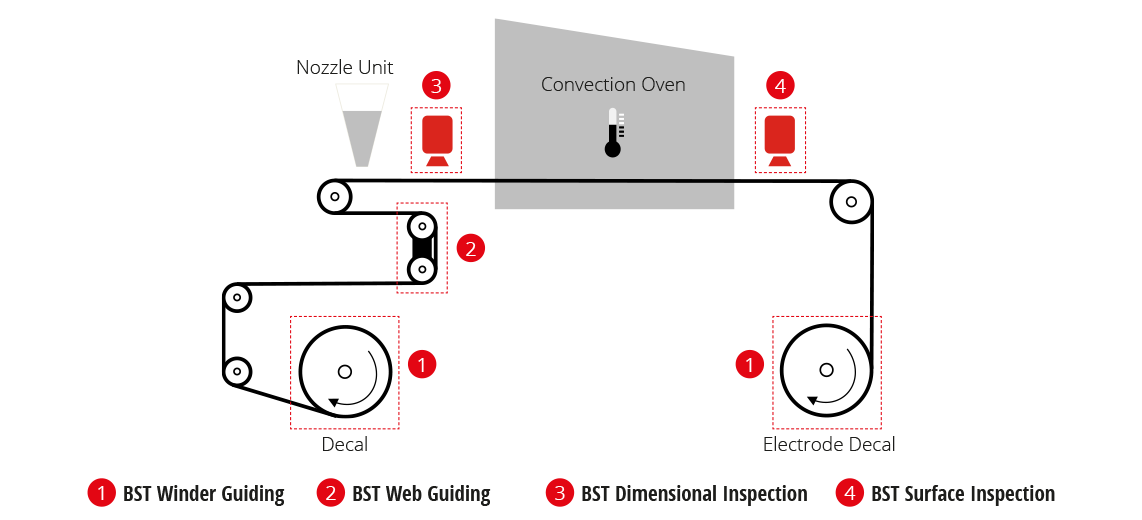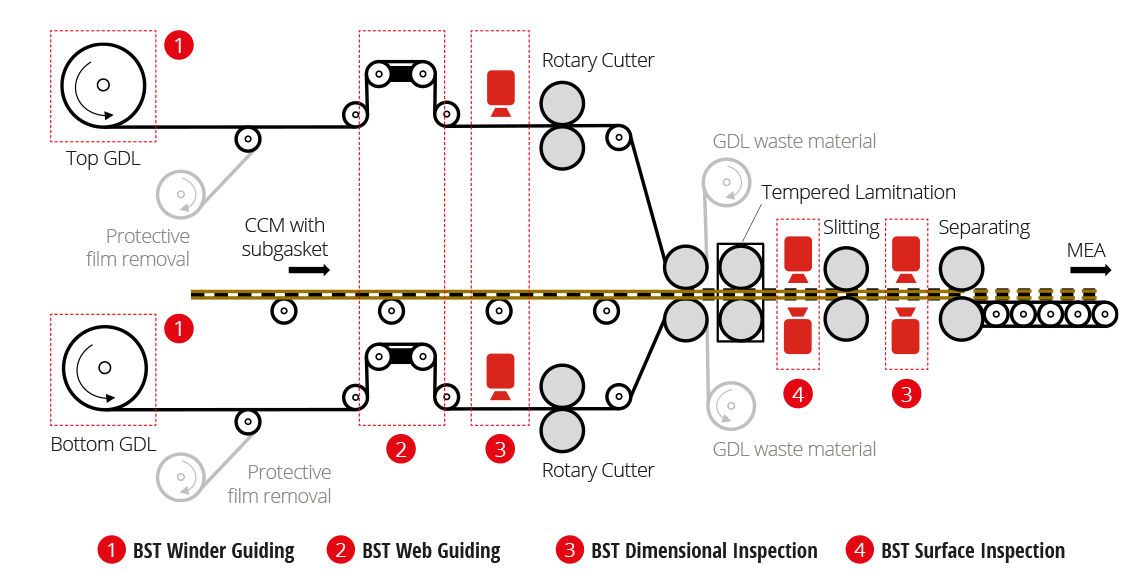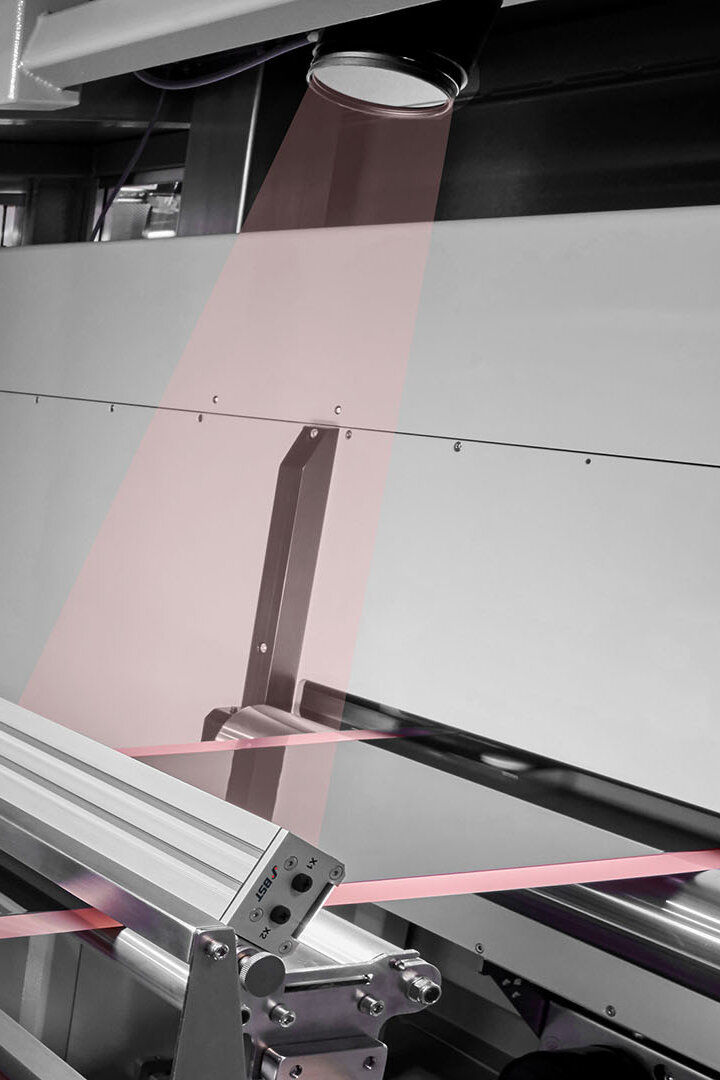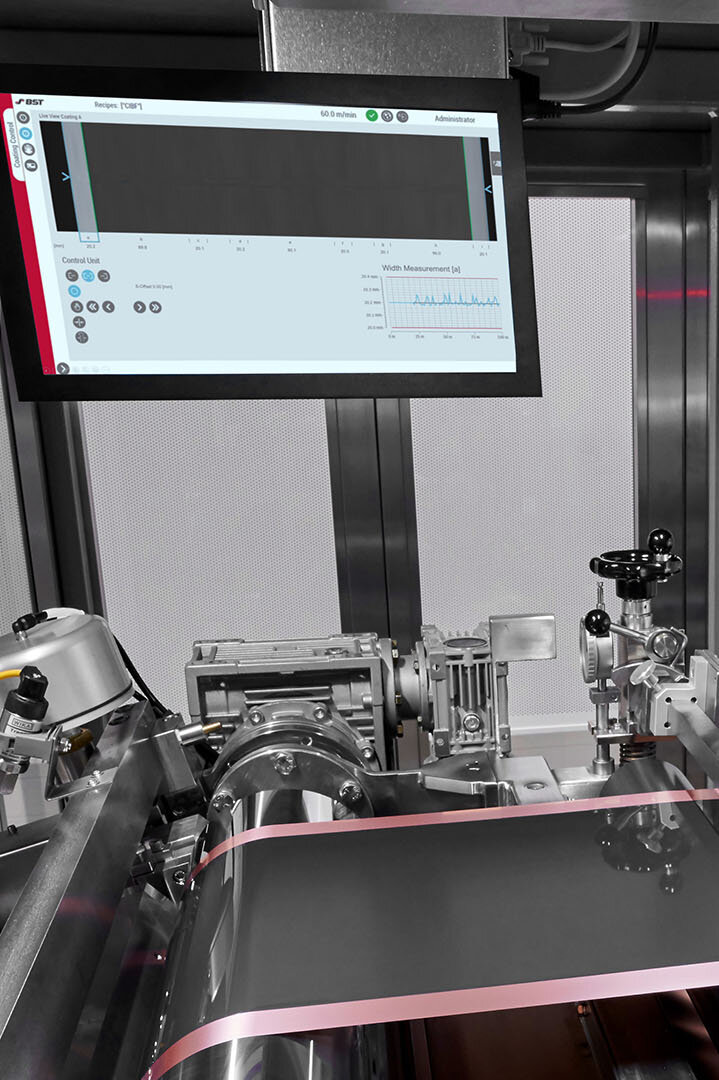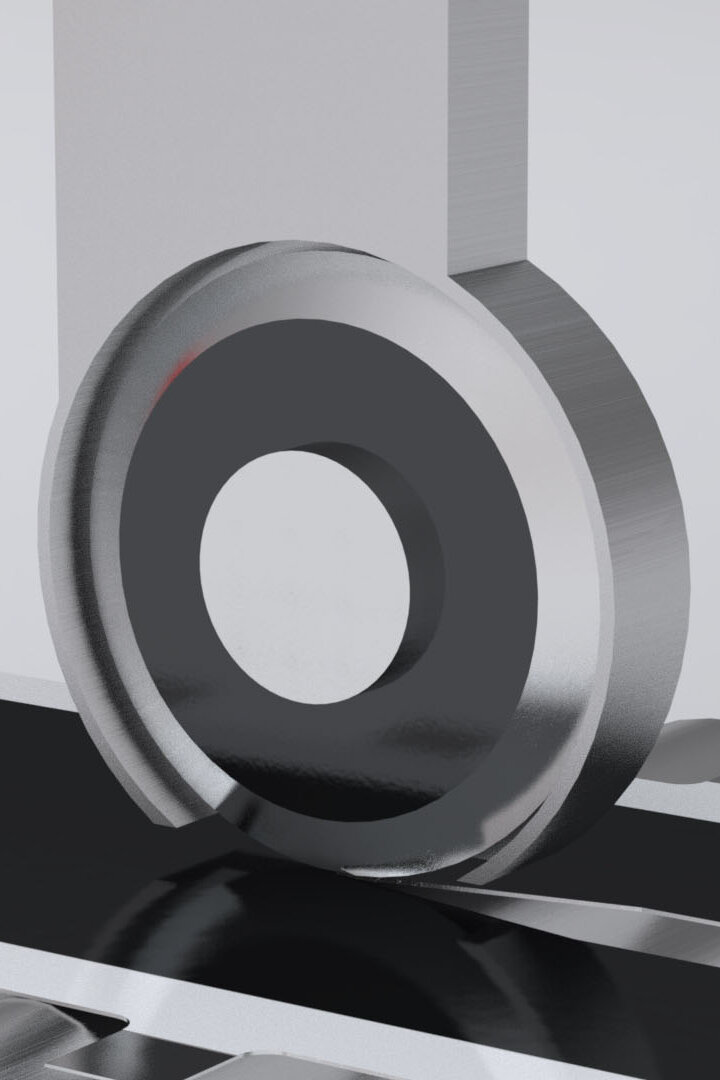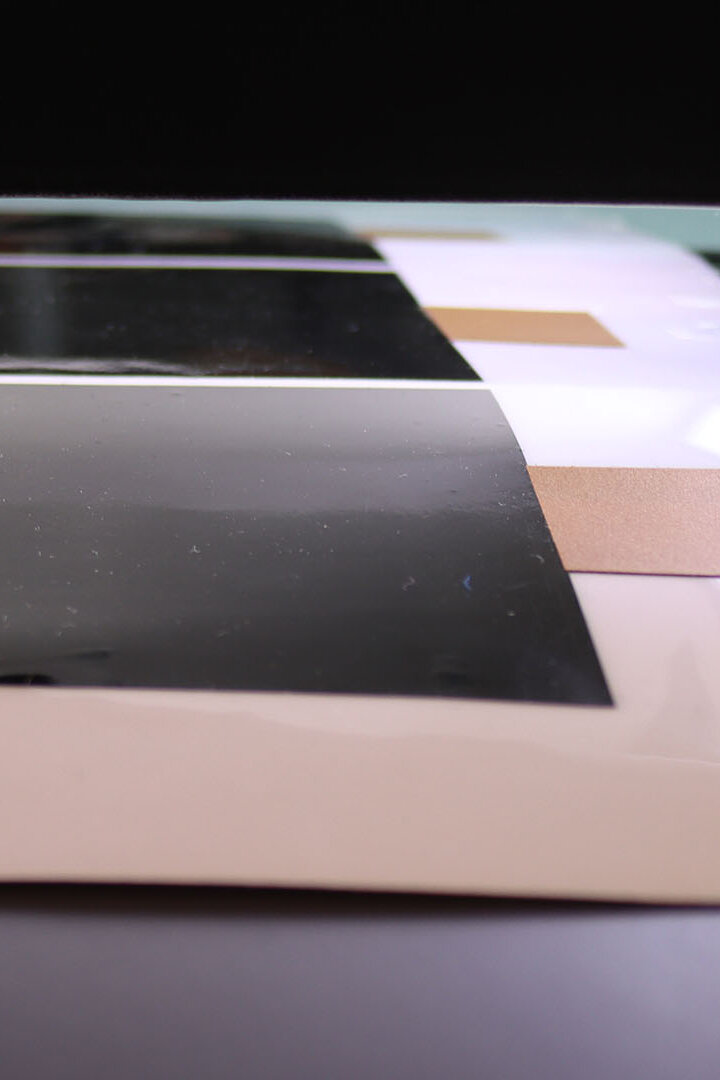Fuel cell
The world of electric mobility and renewable energies is presently undergoing a significant revolution. Fuel cells stand as a potential cornerstone for generating sustainable energy for the future. To effectively address the wide range of applications for fuel cells, progress must be made in both hydrogen infrastructure and cell production.
The answer lies in progressive industrial manufacturing, facilitating simultaneous cost reduction and quality enhancement through economies of scale, automation, technical innovation, and resource and energy efficiency. In the web-based production of fuel cell components, meticulous precision is imperative to manufacturing a product of high-quality and efficiency. Within BST's extensive product range, this challenge is effectively addressed. For instance, our inspection and web guiding systems play a pivotal role. Inspection systems can shoulder diverse measurements tasks and also transmit their measurement data to the web guiding systems.
The result is high-end production with optimized processes - Perfecting your performance.

Coating
In the coating process, a carrier foil known as a "decal" is coated on a single side using a platinum catalyst or "electrode" using a slot die. Alternatively, the PEM can be directly coated on both sides. Subsequently, the web is dried within a convection oven and re-rolled.
In coating, our quality assurance solutions cover web run control, automatic alignment and control of coating positions, as well as a comprehensive surface and edge inspection for all relevant coating possibilities.

CCM Assembly
Following the coating phase, the decail foil is bonded to the top and bottom sides of the PEM through a hot pressing procedure. Rollers or a tunnel then facilitate the cooling of the web. Finally, the decal film removed leaving no traces of residue, and the finished CCM (Catalyst Coated Membrane) is wound. In instances of direct coating, this step is omitted.
BST provides surface inspection systems for simultaneous inspection of the top and bottom surfaces. Additional web guiding systems ensure that diverse requirements of this production process are met.
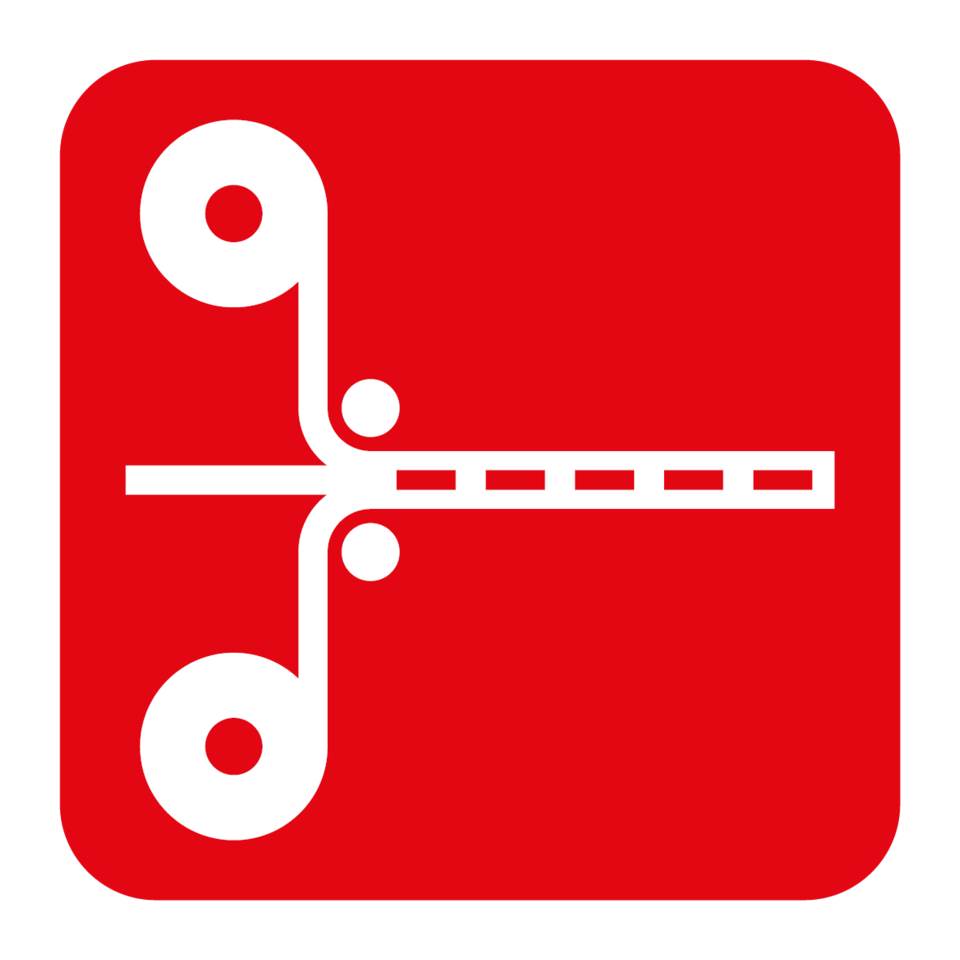
Subgasket Application
The CCM is cut to size while the pre-perforated subgasket, supported by a carrier layer, is simultaneously laminated as a framing element to the top and bottom of the finished CCM.
The carrier layer is removed, and the CCM with subgasket advances in web form to the subsequent process step.
BST's solutions ensure precise material web alignment with the cutting unit and other webs, essential for meeting required geometric standards.

MEA Assembly
In parallel, a gas diffusion layer (GDL) is manufactured in web form, perforated according to specified geometry and then precisely attached to the top and bottom of the CCM by means of hot pressing. The web is then separated in the slitting and separating process then transferred to stacking via a vacuum belt.
Utilizing BST solutions, precise web alignment with the slitting unit and other webs is achieved, thus ensuring adherence to the necessary geometric specifications.
Вызвали ли мы у вас интерес? Тогда свяжитесь с нами!
„Fuel cells are a key technology for decarbonizing the economy. We look forward to addressing current and future challenges in the production of fuel cell systems with our innovative products to further drive the expansion of sustainable energy systems.”
Johannes Scholz, New Business Development
